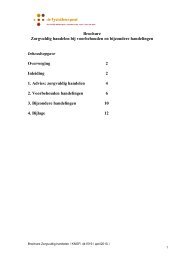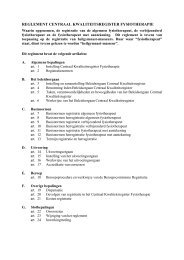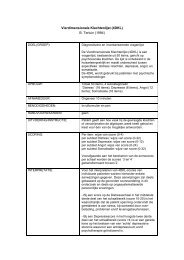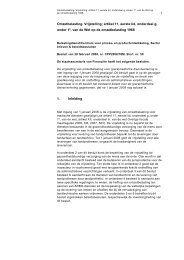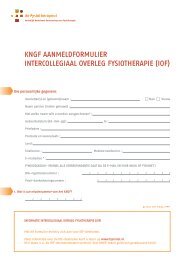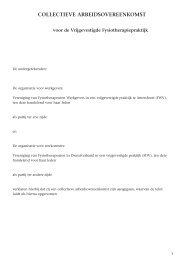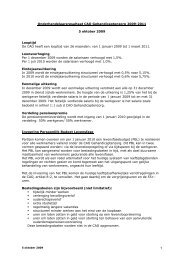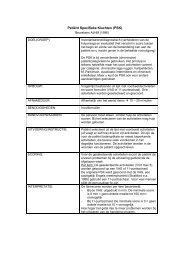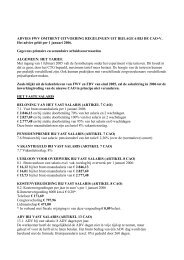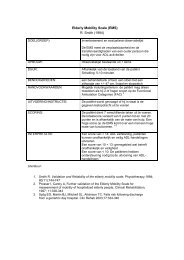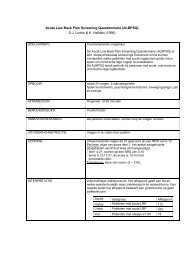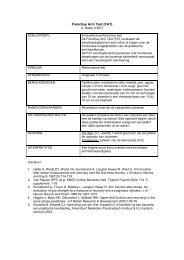Acupuncture and dry-needling for low back pain (Review)
Acupuncture and dry-needling for low back pain (Review)
Acupuncture and dry-needling for low back pain (Review)
Create successful ePaper yourself
Turn your PDF publications into a flip-book with our unique Google optimized e-Paper software.
Analysis 12.9.<br />
Comparison 12 acupuncture plus intervention versus other intervention alone. (Chronic<br />
LBP: > 3 months), Outcome 9 Side effects / Complications.<br />
<strong>Review</strong>: <strong>Acupuncture</strong> <strong>and</strong> <strong>dry</strong>-<strong>needling</strong> <strong>for</strong> <strong>low</strong> <strong>back</strong> <strong>pain</strong><br />
Comparison: 12 acupuncture plus intervention versus other intervention alone. (Chronic LBP: > 3 months)<br />
Outcome: 9 Side effects / Complications<br />
Study or subgroup <strong>Acupuncture</strong> + interv Intervention alone Risk Difference Risk Difference<br />
n/N n/N M-H,R<strong>and</strong>om,95% CI M-H,R<strong>and</strong>om,95% CI<br />
1 Immediately after the end of the sessions<br />
Leibing 2002 3/35 0/39 0.09 [ -0.02, 0.19 ]<br />
Yeung 2003 0/26 0/26 0.0 [ -0.07, 0.07 ]<br />
-0.2 -0.1 0 0.1 0.2<br />
Favours acup + inter<br />
Favours interv alone<br />
A D D I T I O N A L<br />
T A B L E S<br />
Table 1. Criteria <strong>for</strong> the Risk of Bias Assessment<br />
Criteria<br />
Operationalization<br />
A. Was the method of r<strong>and</strong>omization adequate? A. A r<strong>and</strong>om (unpredictable) assignment sequence. Examples of<br />
adequate methods are computer generated r<strong>and</strong>om number table<br />
<strong>and</strong> use of sealed opaque envelopes. Methods of allocation using<br />
date of birth, date of admission, hospital numbers, or alternation<br />
should not be regarded as appropriate<br />
B. Was the treatment allocation concealed? B. Assignment generated by an independent person not responsible<br />
<strong>for</strong> determining the eligibility of the patients. This person has<br />
no in<strong>for</strong>mation about the persons included in the trial <strong>and</strong> has no<br />
influence on the assignment sequence or on the decision about<br />
eligibility of the patient<br />
C. Were the groups similar at baseline regarding the most important<br />
prognostic indicators?<br />
C. In order to receive a “yes,” groups have to be similar at baseline<br />
regarding demographic factors, duration <strong>and</strong> severity of complaints,<br />
percentage of patients with neurologic symptoms, <strong>and</strong><br />
value of main outcome measure(s)<br />
D. Was the patient blinded to the intervention? D. The reviewer determines if enough in<strong>for</strong>mation about the<br />
blinding is given in order to score a “yes.”<br />
E. Was the care provider blinded to the intervention? E. The reviewer determines if enough in<strong>for</strong>mation about the<br />
blinding is given in order to score a “yes.”<br />
<strong>Acupuncture</strong> <strong>and</strong> <strong>dry</strong>-<strong>needling</strong> <strong>for</strong> <strong>low</strong> <strong>back</strong> <strong>pain</strong> (<strong>Review</strong>)<br />
Copyright © 2011 The Cochrane Collaboration. Published by John Wiley & Sons, Ltd.<br />
115



